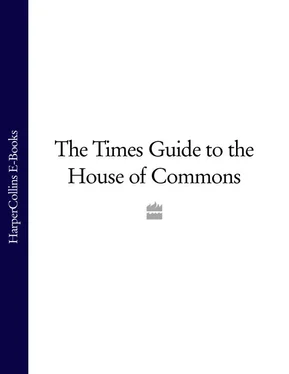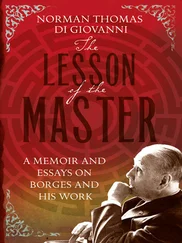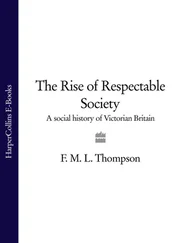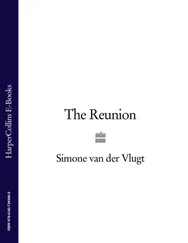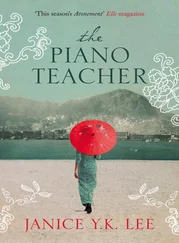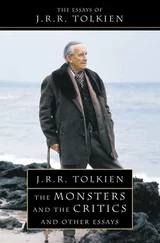Outside London and the big industrial cities and towns of the North Labour did very badly along the motorway belts and in the East and West Midlands (together accounting for a third of their losses). Labour lost Middle England (but not Scotland and, partly, Wales) where Tony Blair’s new Labour did so well in the 1990s. The map shows vividly how Labour was wiped out in the Medway towns, where it just held on in 2005 (Chatham & Aylesford, Dartford, Gillingham & Rainham); and on the other side of the Thames in Essex (Basildon South & Thurrock East, Thurrock, and Harlow); in its 1997 gains along the South Coast (Brighton Kemptown, Dover, Hastings & Rye, Hove, and Dorset South); in the southern East Midlands (both Milton Keynes and Northampton seats, Nuneaton and Rugby); in a belt of more than a dozen seats from Worcestershire up around Birmingham and into Staffordshire, Derbyshire and the northern East Midlands (such as Burton, Cannock Chase, Corby, Derbyshire South, Erewash, High Peak, Leicestershire North West, Lincoln, Stafford, Tamworth, Warwick & Leamington, Warwickshire North, Wolverhampton South West, Worcester and Redditch); in South Yorkshire and Humberside (Brigg & Goole and Cleethorpes); and then in an unbroken group on either side of the Pennines (Colne Valley, Dewsbury, Keighley, Pendle, Pudsey, Rossendale & Darwen and South Ribble).
This analysis is reinforced by a social breakdown by Ipsos MORI, based on its campaign polls weighted to reflect the final result. This suggests that Labour lost the support of skilled manual workers, the C2s, by a huge 18 points on the 2005 election. The switch was even sharper among C2 women. This is classic aspirational Britain, highlighted by Lord Radice, the Labour peer and former MP who produced a detailed analysis for the Fabian Society after Labour lost in 1992. Entitled Southern Discomfort , this showed why the party was out of touch with the interests and hopes of this group: a problem that Mr Blair successfully addressed in 1997.
One of the perennial complaints of the Tories is that the electoral system is biased against them because of the way that boundary changes work. They point to the much larger number of votes required to elect a Tory MP compared with a Labour MP, and hence the much larger vote share required for a Tory majority.
This is only partly true. On average, seats won by the Conservatives had larger electorates than those won by Labour by a margin of 3,750: 72,350 to 68,600. But there is an uneven pattern: only four of the ten constituencies with the largest electorates are Tory held, six are Labour held. The main explanation is differential turnout where there is a much larger gap. For instance, the turnout in seats that the Tories won was 68.4 per cent, but it was only 61 per cent in those held by Labour. Hence the proposal by the Conservatives, reaffirmed by the coalition agreement, to equalise the size of constituencies will only partly address the imbalance in the system against the Tories because it will not and cannot address the issue of differential turnout.
The three safest seats in the country are held by Labour in Merseyside: Liverpool Walton, Liverpool West Derby and Knowsley. The safest Tory seat is Richmond, North Yorkshire, held by William Hague. (All three of the main leaders at the election had above-average personal results in their constituencies.) Five seats have majorities of under 100: Hampstead & Kilburn (Lab, 42); Warwickshire North (C, 54); Camborne & Redruth (C, 66); Bolton West (Lab, 92); Thurrock (C, 92); and the narrowest of all in Northern Ireland, where Sinn Féin held Fermanagh & South Tyrone by only 4 votes.
The election saw a further slight improvement in the gender and ethnic balance among candidates, even slighter among MPs. Just over a fifth of candidates were women: at 20.8 per cent, this represented a slight improvement on the figure of 20.3 per cent in 2005. About 30 per cent of Labour’s candidates were women, against 24 per cent of Tories and 22 per cent of Lib Dems.
Just over a fifth (22 per cent) of the new MPs are women: at 142 the highest number and share ever. There are 48 Tory women MPs, 31 more than in 2005. The number of Labour women MPs is 17 less than in 2005 because of the party’s overall losses but, at 81, it is still well over half the total. The Lib Dems continue to perform poorly, with just seven women MPs.
A total of 26 MPs are from minority ethnic groups. The Tory total rose from two to eleven, while Labour numbers rose by two to fifteen. There are still no Lib Dem ethnic minority MPs.
The inconclusive result of the 2010 election leaves intriguing prospects for the next one. The Tories require a further two-point swing from Labour to gain an overall majority and Labour requires a swing from the Tories of 5 per cent to return to power with an absolute majority (exactly the same as the swing against it on May 6).
Who cares what the papers say?
Alexi Mostrous
Media Editor
In 2005, The Sun decided that the general election was so boring that it needed to employ a Page 3 girl to represent each of the three main parties. The paper followed up by announcing support for Mr Blair with a puff of red smoke from an office chimney. Five years on there were no such stunts. Political reporting was re-energised as Labour sought an historic fourth term. As doubts over David Cameron’s prospects of victory increased, editors flooded pages with election copy. In the month before polling day on May 6, national newspapers printed 11,017 stories mentioning the election, compared with 9,263 during the same period in 2005.
After two elections in which the majority of the press supported Tony Blair and new Labour – overwhelmingly in 2001, begrudgingly in 2005 – Gordon Brown entered this campaign without the unequivocal support of a single national daily newspaper. The Sun abandoned Mr Brown in September 2009, defecting on the day of his speech to the annual Labour Party conference. After more than a decade of supporting Mr Blair, the News Corporation publication offered its 7½ million readers the front-page headline: “Labour’s Lost It”. The paper spent the next seven months gleefully capitalising on Mr Brown’s unpopularity. A story in April revealed that even Peppa Pig, the children’s television character, had apparently “turned her back” on Labour.
Less than a week before polling day, The Times came out for the Tories for the first time in 18 years. In a fullpage editorial, the paper said that Mr Cameron had shown the “fortitude, judgment and character to lead this country”. After supporting Labour in the past four general elections, the Financial Times also concluded that “on balance, the Conservative Party best fits the bill”. Less surprisingly, The Daily Telegraph’s 2 million readers were encouraged, for the 18th consecutive time since 1945, to vote Tory, as were the Daily Mail’s 5 million.
In perhaps the most significant change, The Guardian decided to switch its support from Labour to the Liberal Democrats. “Invited to embrace five more years of a Labour government, and of Gordon Brown as prime minister, it is hard to feel enthusiasm,” the paper told its million readers. Even the Daily Mirror , Labour’s most loyal supporter since 1945, urged some of its 3.3 million readers to vote tactically for the Lib Dems.
At the same time, media cognoscenti were calling time on the very relevance of the press. Nick Clegg had supposedly broken the two-party mould with his barnstorming appearance in the first party leaders’ debate on ITV. Like Susan Boyle before him, a virtuoso performance seemed to catapult Mr Clegg into the nation’s consciousness. Unlike Susan Boyle, good first impressions did not translate into votes. The Lib Dem leader’s approval ratings jumped by 11 percentage points but subsequently fell back, with the party winning fewer seats although more votes than in 2005.
Читать дальше
